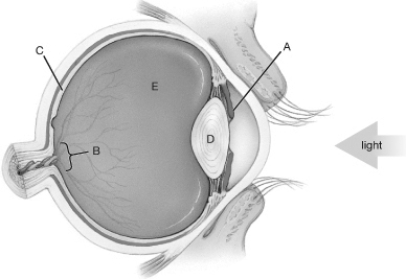
-Owls have many anatomical modifications that enable them to hunt at night. For example, some of their feathers are serrated on the edges, which eliminate the noise created by air flowing over a smooth feather surface. Owls can thus descend on their prey without a sound. They can locate small prey with remarkable accuracy, even in dim light or complete darkness. Experiments conducted in totally dark, soundproof rooms hav shown that owls can capture prey after pinpointing its location to within 1.5 degrees in both horizontal and verti planes.
Based on this scenario, which of these structures do owls primarily rely on when they hunt in total darkness?
A) Nociceptors
B) Mechanoreceptors
C) Photoreceptors
D) Olfactory bulb
E) Umami receptors
Correct Answer:
Verified
Q81: What are the two main functions of
Q82: Q84: How does an insect see the world, Q86: How is the placement of the eyes Q87: Explain how structures within the saccule would Q89: What symptoms indicate that the auditory tube Q90: What is the blind spot, and why Unlock this Answer For Free Now! View this answer and more for free by performing one of the following actions Scan the QR code to install the App and get 2 free unlocks Unlock quizzes for free by uploading documents![]()

